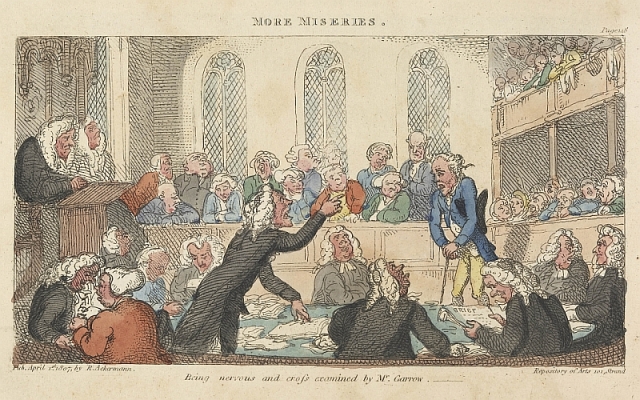Proceedings of the Old Bailey always make for interesting reading, so here are some statistics about the crime of bigamy.
Did you know that between 1750 and 1800 there were over one hundred cases for bigamy, of which 86 cases were against males, 55 of whom were found guilty, 31 not guilty or case dismissed? Interestingly, of the 55 men who were found guilty their sentences were as follows:
15 Branded
30 Sentenced to various periods in prison
7 were transported
2 were fined
and one had no sentence recorded.
There were 19 cases against women who had allegedly married a second time twice whilst still married to their first husband, we had no idea is was such a common occurrence.
However, looking at these 19 cases we have only found 5 that were found guilty, if not found guilty then their case was simply dismissed. Those who were found guilty were given the following punishment –
Sarah Baker (branded)
Catherine Martin (prison),
Jane Allen (branded),
Maria Edkins (sent to House of Correction)
and Lucy Ahier (prison).
So with that we thought we would take a quick look at one of the five women that were found guilty – Jane Allen.
This case took place on 29th June 1785 with William Garrow, who had only been called the the Bar just over a year before, acting for the defendant.

On the 1st December 1782 Robert Allen, a butcher, married Jane Watson at Wapping church, Tower Hamlets, nothing exciting or unusual about that you would think, a perfectly normal marriage.
The problem arose when only two years later Jane, at St. Martin’s in the Fields, Middlesex, on the 1st September 1784, claimed to be a spinster when she married for a second time, her second husband being one Charles Burton. The problem with her second marriage being that her husband Robert Allen was still very much alive, thereby making her a bigamist.
The court heard that Jane had lived with Robert as his legal spouse and Robert produced witnesses who were able to corroborate this.
Jane’s defense was that during the time she was married to Robert that he treated her in a most brutal manner, and forced her to submit to prostitution to maintain him before he abandoned her. Unfortunately the court found Jane guilty of bigamy and her sentence was to be branded.
Anyone convicted of a crime and sentenced to branding would be branded on the thumb with the letter ‘M’ to denote a ‘malefactor’ or ‘evil-doer‘, also, slightly confusingly, ‘M’ for murder, ‘T’ for theft, ‘F for felon. Branding took place in the courtroom at the end of the sessions in front of spectators with a hot iron. It is alleged that sometimes criminals convicted of petty theft, or who were able to bribe the goaler, had the branding iron applied when it was cold.
Normal practice was that the gaoler raised the person’s hand and showed it to the judge to denote that the mark had been made. It became the rule that before a prisoner was tried he was required to raise his hand so that it could be seen whether he bore the brand mark and was therefore a previous offender.

Sources used:


